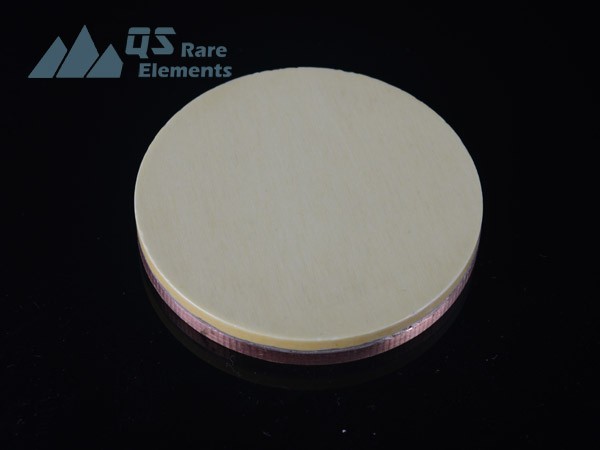Key Materials Enabling Third Generation Semiconductors
Third generation semiconductors leverage wide bandgap materials (Eg≥2.3eV) to achieve transformative capabilities for high-performance devices. For example, silicon carbide (SiC), gallium nitride (GaN), aluminum nitride (AlN), and zinc oxide (ZnO) boast high breakdown fields, excellent thermal conductivity, and radiation resistance. Their unique properties empower high-temperature, high-frequency, and high-power operation unattainable with conventional silicon. Consequently, these materials actively enable major advances in electric vehicles, 5G infrastructure, radar, and more. Looking ahead, ongoing research aims to optimize synthesis methods and defect engineering for ideal crystal growth. Overall, wide bandgap compounds provide the essential foundation underpinning revolutionary capabilities in next-generation power electronics, RF electronics, and optoelectronics. Their development and integration will likely transform modern technology through enhanced efficiency, capability, and reliability.
Silicon Carbide Single Crystals
Silicon carbide (SiC) stands at the forefront of wide bandgap semiconductor development, offering mature technology and exceptional capabilities. With its ultrawide 3.2 eV bandgap and 4 million V/cm breakdown field, SiC single crystals actively enable high-voltage, low-loss power electronics previously unattainable with silicon. Additionally, the material's excellent thermal conductivity empowers compact and efficient device designs. Looking ahead, continued advances in defect reduction and nanostructuring aim to unleash SiC's full potential. Overall, SiC single crystals provide the mature foundation necessary to revolutionize modern power conversion and transmission across the electric grid, rail systems, electric vehicles and more. Their unique properties will likely make SiC the go-to semiconductor for next-generation power electronics.
Gallium Nitride Material
First synthesized in 1928, gallium nitride (GaN) has emerged as a premier semiconductor for next-generation electronics and optoelectronics. With its ultrawide 3.39eV bandgap and 3 million V/cm breakdown strength, GaN enables revolutionary high-frequency, high-power capabilities unattainable with silicon. Moreover, the material’s excellent electron mobility empowers efficient devices. Looking ahead, ongoing advances in crystal growth and defect reduction aim to fully harness GaN’s potential. Overall, GaN’s exceptional properties are poised to transform everything from 5G infrastructure to radar and lidar systems. Its development will likely redefine high-frequency electronics across communications, aerospace, and automotive applications. GaN semiconductors actively open doors to new possibilities in RF power conversion and management.
Gallium nitride (GaN) semiconductors are revolutionizing high-frequency electronics and optoelectronics by outperforming conventional materials like silicon, gallium arsenide, and even silicon carbide. Specifically, GaN devices uniquely operate at higher frequencies from 1-110 GHz, higher power densities, and higher temperatures. This empowers game-changing capabilities for mobile communications, wireless networks, radar, and more. Moreover, GaN's ultrawide bandgap and deep blue light emission actively enable advances in LEDs and laser diodes.
Looking ahead, GaN's exceptional potential across electronics and photonics has garnered extensive research attention. Ongoing efforts continue improving crystal quality to fully harness GaN's capabilities. Ultimately, GaN semiconductors promise to transform microwave power transmission and wireless infrastructure as the material of choice for 5G systems, satellite communications, and radar arrays. Meanwhile, GaN's optoelectronic properties may also disrupt solid-state lighting, high-density optical data storage, and photonic circuits. The future looks bright for this versatile material.

Aluminum Nitride Material
Aluminum nitride (AlN) stands out as a versatile III-V semiconductor for next-generation optoelectronics and high-power electronics. With its ultrawide 0.7-3.4 eV direct bandgap, AlN enables efficient deep UV to blue light emission surpassing gallium arsenide. Moreover, AlN's excellent thermal conductivity, chemical stability, and high breakdown voltage empower high-frequency, high-power operation in extreme environments. Looking ahead, ongoing advances in AlN epitaxy aim to optimize crystal quality and establish low-defect synthesis protocols. Ultimately, AlN’s unique properties may revolutionize solid-state lighting, non-line-of-sight communications, water purification, and high-temperature electronics. For example, AlN LEDs can actively destroy hazardous microbes for sterilization. Meanwhile, AlN piezoelectricity shows promise for microelectromechanical systems. AlN’s impressive capabilities across optics, electronics, and sensing applications make it a promising semiconductor material for next-generation technologies.
Zinc OxideMaterial
With its wide bandgap and multifunctional properties, zinc oxide (ZnO) shows immense promise as an advanced semiconductor material. Specifically, ZnO actively enables numerous applications across electronics and photonics. For example, its excellent photoelectric properties empower high-efficiency emitters and detectors for UV and blue wavelengths. Additionally, ZnO's piezoelectricity facilitates acoustic wave devices and energy harvesting. Moreover, its electrical and optical characteristics suit transparent electronics, luminescent displays, and solar cells. Looking ahead, ongoing efforts to optimize ZnO crystalline quality aim to fully harness its versatile potential. Ultimately, ZnO stands poised to transform next-generation optoelectronics, sensors, energy systems, and more. Its unique combination of electronic, photonic, piezoelectric, and pyroelectric capabilities make ZnO a remarkably multifaceted material for the future.

Conclusion
The third-generation semiconductor materials are leading the semiconductor industry towards a more efficient and reliable direction. Leveraging their exceptional electron mobility, wide bandgap, and high-temperature stability, these novel semiconductor materials, such as silicon carbide, gallium nitride, and indium arsenide, are widely applied in high-power electronics, high-frequency RF devices, and advanced optoelectronic components. Compared to traditional silicon-based semiconductors, the third-generation semiconductors have shown significant improvements in key performance metrics like energy conversion efficiency, operating frequency, and operating temperature. As the technology continues to evolve and the costs continue to decrease, the third-generation semiconductors will drive the transformation of electronics and energy technologies, making important contributions to building a smarter, greener, and more sustainable future.
